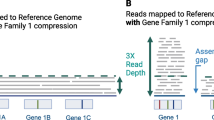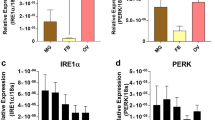Abstract
Oncomelania hupensis is the intermediate host of Schistosoma japonicum. In the present study, we investigated the effects of protein extracts from head–foot or gland tissue of O. hupensis on mother sporocysts of S. japonicum cultured in vitro. In the presence of head–foot protein extract of snails from the native province Hunan, in-vitro-transformed mother sporocysts presented not only a longer survival time and stronger motility, but also a bigger size than parasites cultured with protein extracts of glands of the same snail or head–foot tissue of a non-native snail from the Hubei province. Using suppression subtractive hybridization, two subtractive libraries were constructed on the basis of RNA of sporocysts cultured with or without native snail head–foot protein extract. A number of 31 transcripts were found to be up-regulated. Sequence analyses revealed that they represented genes involved among others in metabolic process, electron transport chain, response to chemical stimulus, and oxidation–reduction processes. Opposite to that 20 down-regulated transcripts were among others related to pseudouridine synthesis, RNA processing, and ribosome biogenesis. The differential expression of three of these transcripts, encoding cytochrome c oxidase subunit 2 (Cox2), NADH-ubiquinone oxidoreductase (ND1), and dyskeratosis congenita 1 protein (DKC1), were confirmed by real-time PCR. The promoted development and the differential gene expression of cultured sporocysts under the influence of head–foot protein extract of native O. hupensis implied not only its ability to improve in vitro culture conditions for intramolluscan stages, it may also represent a priming result with respect to the identification and characterization of factors involved in the parasite–host interplay between S. japonicum and O. hupensis.





Similar content being viewed by others
References
Basch PF (1976) Intermediate host specificity in Schistosoma mansoni. Exp Parasitol 39:150–169
Bi XY, Zhou SL, Li Y (1992) Preliminary observation on the growth of cercarial embryo of Schistosoma japonicum cultivated in vitro. Chin J Schisto Control 4:18–21
Boyle JP, Yoshino TP (2005) Serotonin-induced muscular activity in Schistosoma mansoni larval stages: importance of 5-HT transport and role in daughter sporocyst production. J Parasitol 91:542–550
Carbon S, Ireland A, Mungall CJ, Shu S, Marshall B, Lewis S (2009) AmiGO: online access to ontology and annotation data. Bioinformatics 25:288–289
Castillo MG, Yoshino TP (2002) Carbohydrate inhibition of Biomphalaria glabrata embryonic (Bge) cell adhesion to primary sporocysts of Schistosoma mansoni. Parasitology 125:513–525
Chen P, Chen Q, Yuan Y, Chen SL (2009) Cloning and sequence analysis of Schistosoma japonicum mitochondrial cytochrome c oxidase subunit I (CO I) gene. J South-Central University Nationalities (Natur Sci Ed) 28:36–40
Cheng GF, Feng XG, Lin JJ, Shi YJ, Lu K, Zhou YC, Cai YM (2005) Analysis of membrane protein from egg, schistosomulum, adult male and female worm of Schistosoma japonicum by two dimensional electrophoresis. Acta Zoologica Sinica 51:171–177
Coppin JF, Lefebvre C, Caby S, Cocquerelle C, Vicogne J, Coustau C, Dissous C (2003) Gene expression changes in Schistosoma mansoni sporocysts induced by Biomphalaria glabrata embryonic cells. Parasitol Res 89:113–119
Coustau C, Yoshino TP (2000) Flukes without snails: advances in the in vitro cultivation of intramolluscan stages of trematodes. Exp Parasitol 94:62–66
Coustau C, Ataev G, Jourdane J, Yoshino TP (1997) Schistosoma japonicum: in vitro cultivation of miracidium to daughter sporocyst using a Biomphalaria glabrata embryonic cell line. Exp Parasitol 87:77–87
Coustau C, Mitta G, Dissous C, Guillou F, Galinier R, Allienne JF, Modat S (2003) Schistosoma mansoni and Echinostoma caproni excretory–secretory products differentially affect gene expression in Biomphalaria glabrata embryonic cells. Parasitology 127:533–542
Diatchenko L, Lau YF, Campbell AP, Chenchik A, Mogadam F, Huang B, Lukyanov S, Lukyanov K, Gurskaya N, Sverdlow ED, Siebert PD (1996) Suppression subtractive hybridization: a method for generating differentially regulated or tissue-specific cDNA probes and libraries. Proc Natl Acad Sci U S A 93:6025–6030
Dinguirard N, Yoshino TP (2006) Potential role of a CD36-like class B scavenger receptor in the binding of modified low-density lipoprotein (acLDL) to the tegumental surface of Schistosoma mansoni sporocysts. Mol Biochem Parasitol 146:219–230
Duclermortier P, Lardans V, Serra E, Trottein F, Dissous C (1999) Biomphalaria glabrata embryonic cells express a protein with a domain homologous to the lectin domain of mammalian selectins. Parasitol Res 85:481–486
Giordano E, Peluso I, Senger S, Furia M (1999) Minifly, a Drosophila gene required for ribosome biogenesis. J Cell Biol 144:1123–1133
Gu BW, Fan JM, Bessler M, Mason PJ (2011) Accelerated hematopoietic stem cell aging in a mouse model of dyskeratosis congenita responds to antioxidant treatment. Aging Cell 10:338–348
Hansen EL (1976) In: Maramorosch K (ed) A cell line from embryos of Biomphalaria glabrata (Pulmonata): establishment and characteristics. Invertebrate tissue culture: research applications. Academic, New York, pp 75–99
He YX, Guo YH, Ni CH, Xia F, Liu HX, Yu QF, Hu YQ (1990) Studies on the atrain differences of Schistosoma japonicum in the mainland of China I. Compatibility between schistosomes and the snail hosts. Chin J Parasitol Parasit Dis 8:92–95
Heiss NS, Knight SW, Vulliamy TJ, Klauck SM, Wiemann S, Mason PJ, Poustka A, Dokal I (1998) X-linked dyskeratosis congenita is caused by mutations in a highly conserved gene with putative nucleolar functions. Nat Genet 19:32–38
Heiss NS, Bachner D, Salowsky R, Kolb A, Kioschis P, Poustka A (2000) Gene structure and expression of the mouse dyskeratosis congenita gene, dkc1. Genomics 67:153–163
Ho YH (1963) On the host specificity of Schistosoma japonicum. Chin Med J 82:405–414
Li H, Tao Y, Dai J, Qu G, Wang W, Xing Y, Li Y, Liang Y (2010) Effect of multiple doses of dihydroarteminisin and combination with praziquantel against Schistosoma japonicum in experimental mice. Chin J Schisto Control 22:534–538
Hotez PJ, Brindley PJ, Bethony JM, King CH, Pearce EJ, Jacobson J (2008) Helminth infections: the great neglected tropical diseases. J Clin Invest 118:1311–1321
Hu M, Zhou SL, Li Y (1994) Study on development of sporocyst in artificially infected Schistosoma japonicum in Oncomelania hupensis. Chin J Schisto Control 6:27–29
Huang XB, Xia PF, Yang LH, Jiang Y (2002) Susceptibility of Oncomelania hupensis from different areas infected with Schistosoma japonicum and generation attack ability to rabbits. Chin J Schisto Control 14:35–37
Humphries JE, Yoshino TP (2006) Schistosoma mansoni excretory–secretory products stimulate a p38 signalling pathway in Biomphalaria glabrata embryonic cells. Int J Parasitol 36:37–46
Ivanchenko MG, Lerner JP, McCormick RS, Toumadje A, Allen B, Fischer K, Hedstrom O, Helmrich A, Barnes DW, Bayne CJ (1999) Continuous in vitro propagation and differentiation of cultures of the intramolluscan stages of the human parasite Schistosoma mansoni. Proc Natl Acad Sci U S A 96:4965–4970
Jiang W, Middleton K, Yoon HJ, Fouquet C, Carbon J (1993) An essential yeast protein, CBF5p, binds in vitro to centromeres and microtubules. Mol Cell Biol 13:4884–4893
Lardans V, Coppin JF, Vicogne J, Aroca E, Delcroix M, Dissous C (2001) Characterization of an insulin receptor-related receptor in Biomphalaria glabrata embryonic cells. Biochim Biophys Acta 1510:321–329
Manger P, Li J, Christensen BM, Yoshino TP (1996) Biogenic monoamines in the freshwater snail, Biomphalaria glabrata: influence of infection by the human blood fluke, Schistosoma mansoni. Comp Biochem Physiol A Physiol 114:227–234
Mei BS, Zhou SL (1989) Effects of nutritive factors on Schistosoma japonicum miracidial transformation and mother sporocyst culture in vitro. Acta Hydrobiologica Sinica 13:326–333
Meier UT, Blobel G (1994) NAP57, a mammalian nucleolar protein with a putative homolog in yeast and bacteria. J Cell Biol 127:1505–1514
Mitchell JR, Wood E, Collins K (1999) A telomerase component is defective in the human disease dyskeratosis congenita. Nature 402:551–555
Peng Y, Jiang MS, Zhong QP, Gui JF, Dong HF (2003) Preliminary study on primary culture of cells from Oncomelania hupensis. Chin J Parasitol Parasit Dis 21:176–178
Phillips B, Billin AN, Cadwell C, Buchholz R, Erickson C, Merriam JR, Carbon J, Poole SJ (1998) The Nop60B gene of Drosophila encodes an essential nucleolar protein that functions in yeast. Mol Gen Genet 260:20–29
Ren CX, Sheng XL (2003) Laboratory observation on the susceptibility of oncomelania hupensis to schistosoma japonicum in different districts. Chin J Vector Bio & Control 14:206–207
Ross AG, Bartley PB, Sleigh AC, Olds GR, Li Y, Williams GM, McManus DP (2002) Schistosomiasis. N Engl J Med 346:1212–1220
Ye Q, Zhu JY, Zhong QP, Jiang MS, Dong HF (2007) Primary culture of the cells from Oncomelania hupensis liver. Chin J Parasitol Parasit Dis 25:478–482
Yoon A, Peng G, Brandenburger Y, Zollo O, Xu W, Rego E, Ruggero D (2006) Impaired control of IRES-mediated translation in X-linked dyskeratosis congenita. Science 312:902–906
Yoshino TP, Laursen JR (1995) Production of Schistosoma mansoni daughter sporocysts from mother sporocysts maintained in synxenic culture with Biomphalaria glabrata embryonic (Bge) cells. J Parasitol 81:714–722
Yoshino TP, Coustau C, Modat S, Castillo MG (1999) The glabrata embryonic (Bge) molluscan cell line: establishment of an in vitro cellular model for the study of snail host–parasite interactions. Malacologia 41:331–343
Yoshino TP, Boyle JP, Humphries JE (2001) Receptor–ligand interactions and cellular signalling at the host–parasite interface. Parasitology 123(Suppl):S143–S157
Yoshino TP, Dinguirard N, Mourão Mde M (2010) In vitro manipulation of gene expression in larval Schistosoma: a model for postgenomic approaches in trematoda. Parasitology 137:463–483
Zhou SL (1958) A study on the development of the larval stage of Schistosoma japonicum in Oncomelania hupensis. Acta Microbiologica Sinica 6:110–126
Zhou XN (2005) Science on Oncomelania snail. Science, Beijing
Acknowledgments
We are grateful to Dr. Rong Liu and senior laboratory technician Ying Li in our laboratory, Prof. Pin Nie and his colleagues in the State Key Laboratory of Freshwater Ecology and Biotechnology, Institute of Hydrobiology, Chinese Academy of Sciences, Wuhan, Hubei Province, China, for their help. This work was supported by the National Natural Science Foundation of China (30771876 and 31000956).
Author information
Authors and Affiliations
Corresponding author
Additional information
Jun Yong Zhu and Qing Ye contributed to this paper equally and should be considered as the co-first authors.
Electronic supplementary materials
Below is the link to the electronic supplementary material.
Supplementary Fig 1
Coomassie Brilliant Blue staining of an SDS-PAGE with different types of protein extract from snails. Lane 1 head–foot protein extract of snails from Hunan; lane 2 head–foot protein extract of snails from Hubei; lane 3 gland protein extract of snails from Hunan; lane 4 isotonic NaCl; M prestained protein ladder (Fermentas #SM0671); 22.5 μg protein of each group was loaded onto a polyacrylamide gel (10%). Electrophoresis was performed at room temperature at 50 V for 30 min and then 200 V for 1.5 h, followed by Coomassie Brilliant Blue staining. (JPEG 32 kb)
Supplementary Table 1
Gene ontology classification of differentially expressed transcripts in S. japonicum mother sporocysts cultured with and without O. hupensis head–foot protein extract (DOC 74 kb)
Rights and permissions
About this article
Cite this article
Zhu, J.Y., Ye, Q., Zhao, Q.P. et al. Effects of protein extract from head–foot tissue of Oncomelania hupensis on the growth and gene expression of mother sporocysts of Schistosoma japonicum . Parasitol Res 110, 721–731 (2012). https://doi.org/10.1007/s00436-011-2548-4
Received:
Accepted:
Published:
Issue Date:
DOI: https://doi.org/10.1007/s00436-011-2548-4




